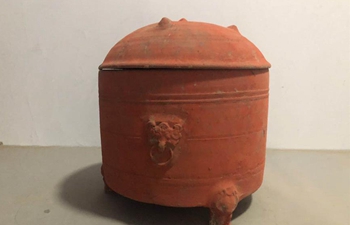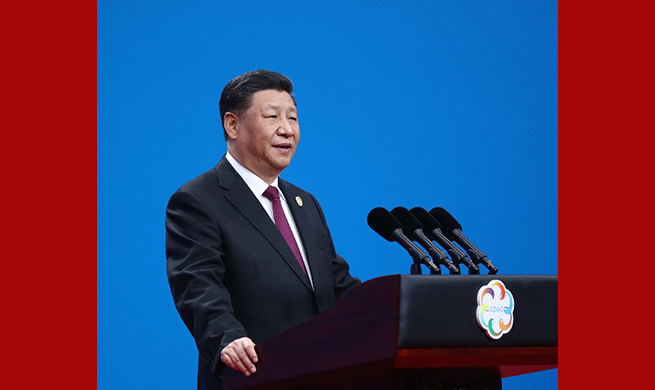BEIJING, May 16 (Xinhua) -- China's Yutu-2, the first rover on the far side of the moon, has found materials from deep inside the moon that could help unravel the mystery of the lunar mantle composition and the formation and evolution of the moon and the earth.
Using data obtained by the visible and near infrared spectrometer installed on Yutu-2, a research team led by Li Chunlai, of the National Astronomical Observatories of China under the Chinese Academy of Sciences, found that the lunar soil in the landing area of the Chang'e-4 probe contains olivine and pyroxene which came from the lunar mantle deep inside the moon.
After Chang'e-4 successfully landed on the Von Karman Crater in the South Pole-Aitken Basin on Jan. 3 this year, the Yutu-2 rover obtained good quality spectral data at two sites.
"The data, unlike that obtained by Yutu on the near side of the moon, gave us a pleasant surprise," said Li.
Analysis showed the lunar soil in the landing area contains a large amount of olivine, low-calcium pyroxene and a small amount of high-calcium pyroxene, which are very likely from the lunar mantle, Li said.
The first important scientific discovery of the Chang'e-4 probe since it made the first-ever soft landing on the far side of the moon was published online in the latest issue of the academic journal Nature.

















